On May 31, 2024, the SDJU No. 1 Satellite was successfully launched. It orbits the Earth at a speed of 95 minutes and 24 seconds per revolution, traveling in a dawn-dusk orbit at an altitude of 540 kilometers and an inclination of 97.6 degrees, marking the beginning of SDJU’s journey around space.
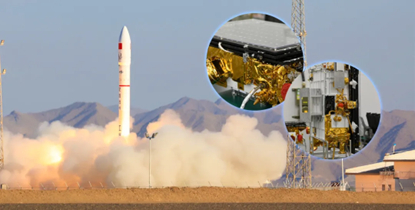
After a week of in-orbit testing, SDJU No. 1 Satellite and its twin, Fudan Information Satellite, have completed various tests of satellite platform, laser communication payload, and infrared remote sensing camera payload. All telemetry data show that the satellites have sufficient energy, high precision and stability in attitude control, stable telemetry, tracking, and command communications. The satellites are functioning normally and in good condition. Currently, the two satellites have established experimental orbital conditions and will conduct laser link testing at an appropriate time.
SDJU No. 1 Satellite carries our university logo and plaque, continually leaving SDJU footprints in the vast space. It continuously transmits images and videos captured in orbit, with clear and complete images and smooth videos, consistently sending the SDJU greetings from space to the blue planet!
Optimizing Disciplines and Strengthening Aerospace Characteristics
SDJU fully leverages its location advantages in the core areas of Lin-gang Special Area of Shanghai Pilot Free Trade Zone and Shanghai Aerospace City in Minhang District. Guided by the needs of the leading and strategic emerging industries in local economic development, SDJU aims to create a discipline system of high-end equipment manufacturing and services deeply integrated into local industries. The focus is on micro-nano satellite manufacturing and integrated space-ground intelligent applications, delving into key technologies like advanced platform and satellite payload. At the same time, SDJU is focusing the back-end of aviation industry, including aviation manufacturing and remanufacturing, aviation materials, avionics and flight control, inspection and testing, airworthiness certification, and intelligent operation and maintenance. This is sure to promote mutual support and cross-integration of advantageous disciplines, continuously forming distinctive features in the field.

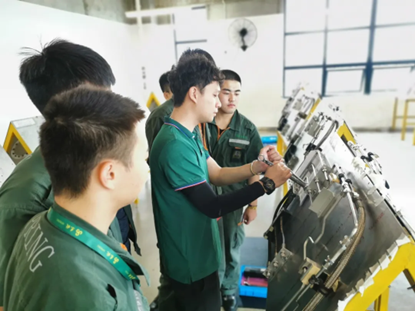
Working together in Building High-Energy Collaborative Platforms
By integrating science and industry with education, SDJU has been vigorously bringing in and assembling aerospace research teams. SDJU has successively established internal research platforms such as the Aviation Research Institute, Micro-Nano Satellite Intelligent Research Institute, and the Laser Quantum Detection Research Center. Additionally, we are planning to establish research platforms in fields such as aviation flight control, airworthiness certification and safety assessment, and intelligent sensing and detection. These efforts aim to continuously strengthen the construction of specialized aerospace disciplines.

Valuing Talents, and Building New Patterns of Pooling Talents
Focusing on regional industries and SDJU’s development direction, with an emphasis on key development areas such as aerospace, high-end equipment, and intelligent manufacturing, SDJU is implementing a strategy of strengthening itself with talents. This involves solidly executing the strategy of recruiting talent, nurturing talent, and retaining talent. Our university adheres to the integrated construction of disciplines, platforms, and teams, building platforms, attracting talent, and gathering teams around key directions. Currently, SDJU has introduced an intelligent manufacturing team for micro-nano satellites and other aerospace talents, and has appointed several well-known industry experts as members for expert committees of Aviation Industry School and the Aviation Research Institute. These efforts are to stimulate the continuous and in-depth development of our university’s aerospace drive.
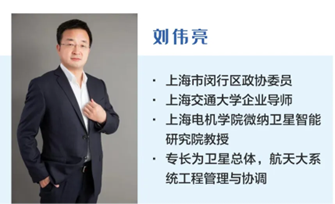
University-Enterprise Collaboration in Expanding New Models of Talent Cultivation
Aiming at leading industries such as aerospace manufacturing and operations, and commercial space, SDJU has partnered with leading enterprises like COMAC Shanghai Aircraft Manufacturing Co., Ltd., Eastern Aviation Technology Co., Ltd., Spring Airlines to jointly establish the Aviation Industry School. Together, they initiated “3+1” order-based classes and applied for specialized programs. SDJU also actively integrates the technical research strengths of its disciplines, including electrical engineering, mechanical engineering, electronic information, and materials science, to deeply enhance exchange, intersection, convergence, and integration. Our university plans and incorporates core technical systems in the aerospace industry in collaboration with government and industry with commitment to deepening industrial cooperation and scientific exploration in the aerospace field. Now SDJU offers an undergraduate program in Aerospace Manufacturing Engineering to train outstanding field engineers engaged in aircraft design, manufacturing, and operations in the high-end equipment manufacturing sector of aerospace, actively contributing to the development of the industry.
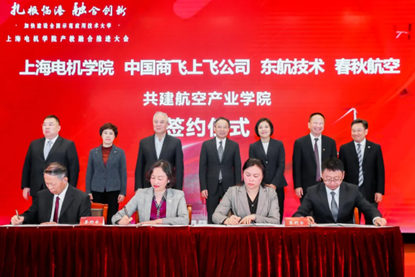

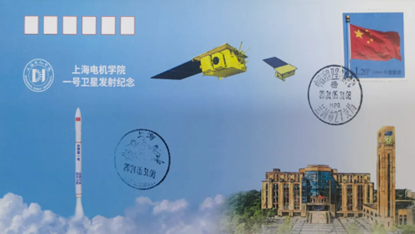
The successful development and launch of the SDJU No. 1 Satellite marks a significant step forward in our efforts to establish a strong aerospace focus. In the future, SDJU will further accelerate the layout and development of aerospace-related disciplines and expedite and solidify its progress towards becoming a national pilot of applied technology university.






